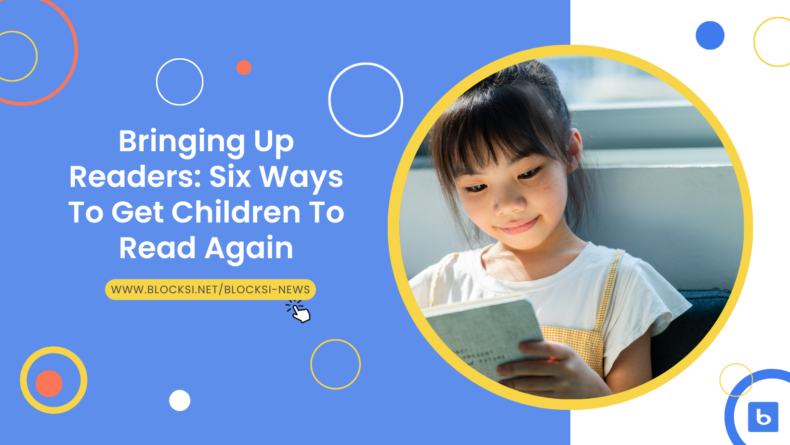NEWS
Bringing Up Readers: Six Ways To Get Children To Read Again

Before the emergence of flashing screens and all other sorts of modern media, one of the few ways of finding imaginative magic was reading. But today, children read less and less. Why is this bad, and how can teachers help solve that?
Twenty-first-century learning consists of using various modern tools that help teachers perfect the educational experience. And despite the many obvious benefits of integrating and using Educational Technology (EdTech), reading among kids appears to be declining.
Reading is proven to be a fundamental building block of a child’s growth. But literacy is much more than knowing how to read. Knowing how to read and write well helps students (and future adults) function better in societies, improves critical thinking, stimulates imagination, and much more. Reading comprehension can, for example, predict college success, improve empathy, and even stimulate and strengthen the brain. And very simply put – if a student very gifted in math doesn’t understand the instructions, he won’t be able to use his actual skills with literacy limitations restricting him.
But despite the numerous benefits, children’s reading scores are decreasing. According to the National Assessment of Educational Progress (NAEP), fourth-grade and eighth-grade students’ reading scores across the country are now worse than those in 2019. Understanding that literacy and rekindling a love of reading go hand in hand, these skills affect various life aspects; getting children to read again is absolutely necessary.
Reading is meant to be fun, enjoyable, and engaging, and there’s absolutely no reason it shouldn’t be presented as such. Here are a few tips on how to help the children internalize that and encourage reading as a teacher.
#1: Create Reading Challenges
One of the simplest and more pleasurable ways of increasing the joy of reading is setting simple reading challenges. You can come up with a reading challenge for just about anything. You can challenge the students to read a certain number of books in a certain time frame, make it about reading certain genres or topics somehow connected to the school curricula, etc. You can even come up with something extra fun – like students having to read books with titles starting with every letter of the alphabet.
#2: Provide Reading Rewards
You should reward students who complete reading assignments or challenges. Provide them with small prizes or extra credit. This will incentivize them to read and give them something to look forward to. When forming the challenges, try not to be too restrictive. Allow students the freedom to choose what to read so they don’t develop resistance simply because reading becomes just another thing they are told to do.
#3: Make Reading a Fun Habit
Besides assigning fun reading challenges, make sure to assign books that students find engaging and interesting. Let them choose between different reading materials, such as books, comics, magazines, and graphic novels. And don’t forget about audiobooks, which can be a fun way of getting acquainted with literary works and improving comprehension and vocabulary the same way as traditional books. By allowing students some freedom, reading can become more entertaining and can even become something to do for leisure outside the context of a classroom.
#4: Incorporate Technology
While planning interesting reading activities, you can incorporate a variety of supplementary EdTech tools. Specially essential in enriching the student reading experience is making it multisensory. With the help of audio, sensory, and visual elements, you can make the readings more appealing to the children. Classroom management systems, such as Blocksi, can be helpful with that, allowing you to bring reading closer to each and every student. Using such tools, students can have an easier time developing their reading fluency, interest, and confidence.
#5: Consider Students’ Individual Learning Differences
Understanding and acknowledging that your students have learning differences, work to provide beneficial educational experiences that are suited to each child’s individual talents. So, while planning the reading activities, make sure to consider students’ individual learning differences. Again, you can do this with the help of EdTech, which allows you to further personalize the reading experience, for example, by increasing the font size.
#6 Encourage Library Memberships
Being a part of library communities can establish healthier relationships between students and reading. Even a short visit to the local library can open a world of endless reading opportunities, and children can choose what they want to read with the guidance of librarians. So, make sure you let the students (and their parents) know about the local options for easily accessing versatile reading materials – especially before the summer.
For Students To Thrive in Life, Literacy Is Essential
Not only is reading enjoyable, fun, and a great way of diversifying the lessons, but it also breeds higher levels of creativity and imagination, grows vocabularies, and strengthens concentration. And these are only a few of the reasons it is important for students to become passionate about reading. Let us all join forces in a mission to transform reluctant students into voracious lifelong readers.
SOURCES
[1] Reading Comprehension Can Predict College Success
[2] Novel Finding: Reading Literary Fiction Improves Empathy
[3] Reading skill and structural brain development
[4] Scores decline in NAEP reading at grades 4 and 8 compared to 2019





